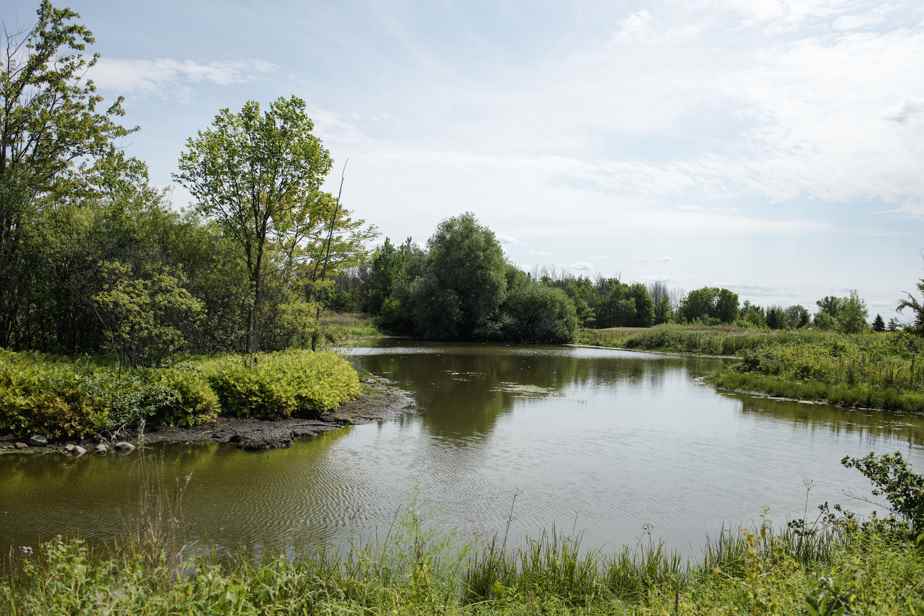The value of our natural assets, whether our forests, lakes or wetlands, should be reflected in cities’ financial statements just like any other infrastructure, argues a University of Waterloo report that establishes the financial value of natural assets in Quebec and Canada.
Posted at 5:00 a.m.
Current accounting rules prohibit municipalities from recording natural assets in their financial statements. This exception clause for non-purchased natural resources is found in the conceptual framework of the Public Sector Accounting Board (PSAB). A guide for accountants.
One hundred Canadian cities have already done their homework to establish the value of their fields, coastal marshes, dunes, soils, forests, rivers, lakes and wetlands. However, they are blocked by the CCSP.
“People are asked to invest in nature, but if nature is worth nothing in the financial statements, how do you calculate the return on investment? asks researcher Joanna Eyquem, executive director of the Intact Center on Climate Adaptation at the University of Waterloo.
“That’s the big problem right now,” she continues. If nature had a value in the same way as the infrastructures that provide services, we could count the return on investment. »
Assurance provider Intact Financial Corporation and audit and tax service provider KPMG joined the University of Waterloo and the Municipal Natural Assets Initiative (MNAI) in writing the report.
“There are accountants and financial professionals who come to the same arguments. It shows that it’s not just an NGO story,” says researcher Joanna Eyquem.
Why set the price of a lake or a forest
Certain areas of the province of Quebec are subject to strong trade-offs, particularly regarding urban sprawl, explains in an interview Jérôme Dupras, associate professor at the University of Quebec in Outaouais and holder of the Canada Research Chair in Economics. ecological.
Consider the needs for residential and industrial development, local agriculture, conservation and road development. “There are many things in the same basket during a land-use planning process. By doing the exercise of establishing an amount, it makes it possible to say: here is the value of these natural infrastructures near cities, and these values provide indicators for making informed decisions. »
If our natural assets were considered as infrastructures, we could also see them as investments and not as expenses in the financial statements, specifies the researcher, also a musician of the group Les Cowboys Fringants.
“Initially, an aqueduct is an expense,” he explains. But then, we are able to immobilize it, to distribute the expense over a long period. In an urban environment, when you go to plant a tree, replace it, because it’s injured, do watering, that falls into the expense columns of a city. »
Our urban forest, however, provides quantifiable services to city dwellers, says Jérôme Dupras. It captures air pollutants to reduce asthma episodes and health effects while the ground of the trees captures cubic meters of water molecules which reduces the pressure on sewer systems. “It has an impact on the property value of buildings. »
“Wetlands, forests and salt marshes are not only essential for biodiversity,” said Mike Pederson, president of the Business Development Bank of Canada (BDC) and director and president of the Nature Conservancy of Canada. “They are also our front-line allies in reducing the impacts of floods, erosion, heat waves and droughts, in addition to contributing to the elimination of carbon emissions, thus curbing climate change. »
A universal calculation method requested
The authors of the report wanted to establish a specific methodology and standards that all governments and cities could use to establish the value of each natural asset. Currently, specialists calculate the value of the service provided by nature, the cost for a city to build an infrastructure that provides the same service and the cost of damages if the asset were to disappear.
For example, wetlands in the Quebec City metropolitan area will reduce flood damage because of their ability to slow down, store and evaporate excess rainwater. These services have a cost.
Elsewhere in the world, countries such as the United Kingdom, South Africa and the United States have taken steps to integrate the value of nature into their national accounting systems.
How much are these natural assets worth?
Natural infrastructure provides services to the population in the same way as human-built infrastructure such as water distribution networks, roads, gas pipelines, wastewater treatment plants, hospitals and schools.
> Urban and rural forests in the greater Montreal area: $2.2 billion/year
> Value of ecosystems in the Communauté métropolitaine de Québec (CMQ): $1.1 billion/year
> Wetlands of the Communauté métropolitaine de Québec (CMQ): $49.8 million/year
> Greenbelt and Gatineau Park: $5.2 million/year > Oshawa Creek watershed (Ontario): $18.9 million/year

